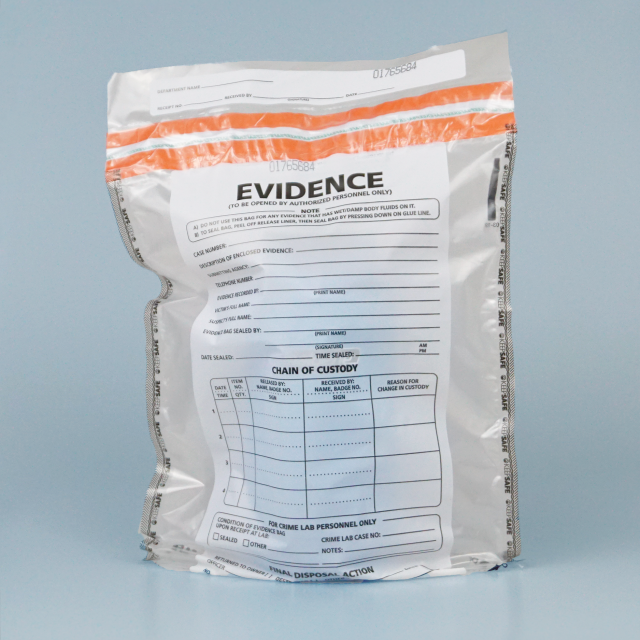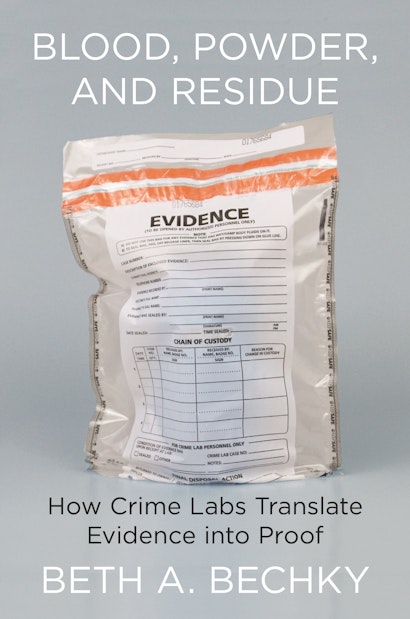When I tell people about my new book about forensic scientists, Blood, Powder and Residue: How Crime Labs Translate Evidence into Proof, they usually think about popular TV shows such as “CSI.” But there’s a gap between the public image of scientists and what scientists do, and this gap matters. I had a recent amateur science experience that reminded me of this. One evening right before Christmas I stood near the edge of the Hudson River, clutching a pair of binoculars, hoping to catch a glimpse of the ‘great conjunction’ of Jupiter and Saturn. A couple came down the hill with a telescope and tripod, and as the sky darkened other walkers and bikers nearby on the path gathered around. One woman asked, “Have you seen it? We thought we saw it over those towers in New Jersey,” pointing across the river. A family said they had walked over from the East Side, “but we are worried it might be too cloudy.” The couple with the telescope offered to let us all have a turn: “It should just take 5 minutes to set it up—on the solstice we could see some of Jupiter’s moons.”
As the couple set up their telescope, we all joked about feeling lucky to find experts with the right equipment. When I took my turn, I could only see two of the moons. “There should be four visible,” the telescope’s owner told me. Then, after a pause, he said, “You know, science is real.” Sounding almost reverent, but also a bit disappointed in me, he added, “There’s a guy who posts images of the locations of planets and their moons on the internet so you can check that you’ve really seen them.”
I agree: Science is real. However, unlike our idealized image of science, the reality of science is that it is never simple or easy. Science is messy and subject to interpretation. In our little group of amateur astronomers, we wondered: Do we have the right location in the sky? How do the weather conditions affect what we see? Who is an expert, and what equipment and data are they using to be convinced (and convince others) that they have it right? Importantly, questions of scientific interpretation are as extensive among working scientists as among non-experts.
The social dynamics that underlie the interpretation of science are at the heart of my book about the work of forensic scientists. Forensic scientists question the physical world, validate their techniques, and make judgments about what their findings mean. They do so in the context of analyzing evidence for criminal cases, and against the backdrop of the criminal justice system. My book tells the story of their work, and in doing so provides a rendering of science and expertise in action.
To tell this story I spent eighteen months in a crime laboratory with forensic scientists as they carefully scrutinized evidence: bullets found at the scene, clothing from suspects or victims, fingerprints on weapons, plastic baggies of drugs. Their scientific analysis, while essential, is only the start of their work. Forensic scientists spend just as much time and effort crafting the reports of the findings that are used by the criminal justice system. They worry about appearing to testify in court, where juries will struggle to make sense of their complex analyses and attorneys will question their processes. And they know such challenges to their expertise have consequences for suspects, victims and the public. One firearms examiner described this aspect of his work:
I’m just there to assist the trier of fact, which is the jury. So no matter who’s asking me the question, I have to direct my response to somebody who doesn’t have the technical experience, skill and knowledge, and give them a message that they can understand in their terms, that’ll help them make a decision about my work. And in the meantime, attorneys are asking you questions so that you could give them that information, but their questions can feel slightly adversarial, or condescending. So I don’t walk into court with an attitude that like I’m the smartest person around, and I know everything. I walk in there with a sense of responsibility.
In the book I describe the scientific, organizational, and social challenges in the work of forensic scientists, arguing that the work that they do to anticipate what will happen to their findings in the world of criminal justice is critical to understanding their expertise. They must figure out how to translate their findings into a comprehensible form for non-experts, while preserving the scientific facts of the messy evidence they analyze. This means creating well-lit digital images of their microscopic bullet comparisons or finding the perfect analogy to describe the DNA profiling process (“Xerox copying of DNA”). Beyond their translation efforts, forensic scientists work to “educate” the criminal justice community about the limits of the science. Doing so requires negotiation: telling the prosecutor why the lab will not analyze the hundreds of beer bottles picked up at the bar where the knife fight happened, or explaining why gunshot residue found on the hand of a suspect does not necessarily mean that person fired a gun. Thus, amateurs’ images of science, just like my experience of the great conjunction, influence how these scientists do their own work. Translation, anticipation and negotiation are key to the work of forensic scientists, because it enables their work to be used by a system of non-experts to make consequential decisions about people’s lives.
Beth A. Bechky is the Seymour Milstein Professor of Ethics and Corporate Governance and Strategy at New York University. She lives in New York City.

